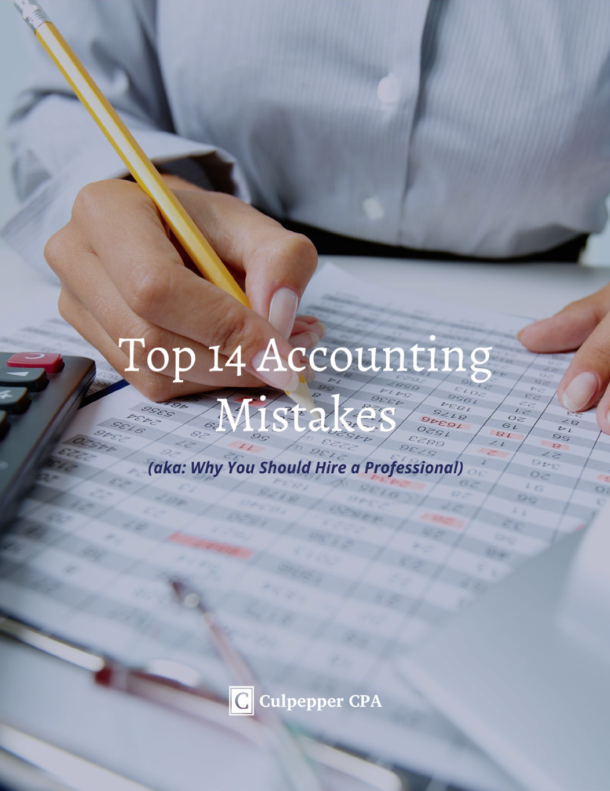In a normal world, laws and guidance associated with federal and state taxation with clearly defined rules and guidelines are already difficult enough to interpret. But as with many things in this COVID-19 impacted world, “normal” is now out the window, even when it comes to recent legislation enacted to combat this pandemic.
House Resolution 748 – the Coronavirus Aid, Relief, and Economic Security (CARES) Act – is no exception. While we have touched on certain aspects of this Act before, in this post we’ll dive into the specifics of the Paycheck Protection Program (PPP) Loan and give you the run-down on what it is, how it works, and how you might benefit from it.
Paycheck Protection Program- The Evolving Rules
The experts’ initial interpretations of the PPP mostly speculated that expenses for contract labor – payments to independent contractors or other businesses that function outside of a normal employer/employee relationship – could be included in the calculation of PPP Loan eligibility (and potential forgiveness).
Turns out this was flat wrong. Clarification came out shortly thereafter that the only self-employment income allowed to be included in the PPP Loan eligibility calculation is that of the owner(s)/partner(s). Otherwise, it requires actual “payroll” – bonafide W-2 wages to actual employees. No payments for contractors, casual labor, or services. Those self-employed individuals are, however, eligible to apply for their own PPP Loans.
To further complicate matters, an additional loan program, the Economic Injury and Disaster Loan (or EIDL) was also made available to small businesses dealing with the COVID-19 pandemic and its impact on business operations.
The EIDL is, in many ways, similar to a traditional loan, albeit with more streamlined application and funding timeframes and generally more favorable terms. It can provide loans of up to $2M based on creditworthiness and ability to repay and also includes a provision for an “advance” of up to $10,000 that does not require repayment, regardless of whether a loan is ultimately approved and funded or not. Unlike the PPP Loan, there are very few restrictions regarding the use of these funds, but even without a requirement to repay it, this “grant” can have an impact on a related PPP Loan.
A PPP Loan is based strictly on payroll, factoring in annual compensation of up to $100,000 per person for qualification purposes. It is generally based on 2019 payroll (although there are some alternatives available for certain borrowers), calculates the monthly average, and then multiplies that number by 2.5. That’s it. Simple enough right?
To further illustrate the eligible loan amount: if a business did not have employees on payroll in 2019, then funding should be capped at $20,833, assuming the business owner had at least $100,000 in self-employment income in 2019 ($100,000 / 12 = $8,333 average eligible monthly payroll cost; $8,333 x 2.5 = $20,833).
In another example, assume an S-Corporation had 2019 payroll to a shareholder of $135,000 and 5 other employees that averaged $50,000 in annual compensation. The maximum loan amount in this scenario would be $72,917, based on the following calculations:
$135,000 (capped at $100,000) + 5 x $50,000 ($250,000) = $350,000 Total Eligible Payroll Costs
$350,000 / 12 = $29,167 Average Eligible Monthly Payroll Costs
$29,167 x 2.5 = $72,917 Eligible SBA-Backed PPP Loan Amount
So – You Received A Loan. Now What?
Proceeds from a PPP Loan can be used for the following eligible expenses:
- Payroll – Salaries, wages, vacation pay, parental or family leave, medical or sick leave, health benefits, and retirement benefits
- Mortgage Interest – for mortgage obligations in place prior to 2/15/20
- Rent – for lease agreements in place prior to 2/15/20
- Utilities – as long as service was in place prior to 2/15/20
There are certain conditions, however, that impact the amount of potential loan forgiveness for these expenses. While there is much debate and speculation that some of these conditions may change, here is what the current conditions reflect:
- Eligible expenses are those incurred over the 8-week period commencing with the date of loan funding (the “Covered Period”). Note – recent guidance from the SBA provided an option to elect an “Alternative Payroll Covered Period” related only to payroll costs. If elected, it would allow the borrower to shift the commencement of the 8-week Covered Period to the first day of the first pay period following the receipt of the PPP funds, so the Covered Period could coincide with the payroll schedule of the borrower. The Covered Period for non-payroll costs would still commence with the date of loan funding. The SBA also specified that, unlike initial guidance that required expenses to be both “paid and incurred” during the Covered Period, expenses would be eligible for forgiveness as long as they are incurred during the 8-week Covered Period and subsequently paid by the next regular billing or scheduled payment date.
- At least 75% of a PPP Loan must be used for eligible payroll and related expenses. Payments to independent contractors are not included. Only payroll wages reported to W-2 employees, along with any self-employment income for business owners, can be considered for forgiveness, and only up to $15,385 per person can be counted (annualized salary of $100,000).
- Staffing levels must meet prior period thresholds. If there’s a decrease in full time equivalent (FTE) employees compared to the relevant prior period, there will be a reduction in the amount of the loan eligible for forgiveness. In order to be eligible for full forgiveness of a PPP Loan, a business must have an equal or greater number of FTEs during the 8-week Covered Period as compared to one of the following previous periods that can be used for comparison:
-
- Feb 15, 2019 – June 30, 2019 or
- Jan 1, 2020 – Feb 29,2020
Otherwise, the eligible loan forgiveness is reduced by the percentage of current FTEs vs. the prior period selected for comparison.
There is an exception – a grace period of sorts – for rehiring, however. A borrower will not be subject to a reduction in eligible loan forgiveness due to a decrease in FTEs if the borrower re-hires employees and meets the minimum FTE requirements by June 30, 2020.
- At least 75% of total wages must be maintained. If an employee’s current pay is less than 75% of their pay in the comparison period, the amount of a PPP Loan eligible for forgiveness is reduced.
- The receipt of an EIDL advance/grant will also impact the amount of forgiveness. Any amount received by a borrower from an EIDL advance will reduce the amount of eligible loan forgiveness, dollar for dollar.
Self Employed Individuals
Self-employed individuals are entitled to use PPP Loans to replace their lost compensation; however, there are a few differences related to the forgiveness calculation. The eligible forgiveness for sole-proprietors and other self-employed individuals is limited to 8 weeks of 2019 net profit (capped at $100,000). This means an individual that netted $45,000 of income on a Schedule C in 2019 would be eligible for a loan of $9,375 (2.5X Average Monthly Payroll Costs).
Only 8 weeks of this “payroll” is eligible for loan forgiveness ($6,923). Thus, the remaining $2,452 would require eligible rent, utilities, or interest expense in order to be forgiven. For rent, utilities, or interest to be factored into the loan forgiveness, these sole-proprietors would have needed these expenses listed on their 2019 tax return.
Treatment of Expenses Used For Loan Forgiveness
Although Congress made it clear in the CARES Act that the forgiven amount of PPP loans would not be considered taxable income to the borrower, the IRS issued Notice 2020-32 stating that any expenses used toward PPP loan forgiveness will not be allowed as a deduction from income for 2020.
Based on this interpretation by the IRS, any payroll, rent, utility, or interest expenses included in the calculation of PPP Loan forgiveness will be treated as non-deductible expenses. Congress has voiced that this was not their intent with HR 748, but until or unless they pass legislation that would nullify Notice 2020-32, these expenses will be disallowed – meaning net taxable income will be effectively increased by the amount of loan forgiveness. There is bi-partisan support for such a bill to fix this, but nothing is guaranteed at this time regarding this very impactful Notice from the IRS regarding treatment of these expenses.
So, What If It’s Not Forgiven?
Any amount of a PPP Loan that is not forgiven will still have favorable terms. If a business is unable to use all of the funds during the Covered Period, or fails to meet some of the other requirements for loan forgiveness, the remaining amount will be subject to a nominal interest rate of 1%. The program also includes a deferral of payments for 6 months and then has a repayment term of 18 months.
Conclusion
While there is plenty of confusion, chaos, disagreement, and unintended consequences regarding the SBA-backed loans provided for in this Act, one thing is certain: they have provided a tremendous amount of much-needed support and assistance to many small businesses in these confusing and sometimes scary times.
There are many other specifics and nuances regarding this aspect of the CARES Act, too many to mention here. That’s the biggest reason you need professional assistance when it comes to analyzing your business’ impact and eligibility as well as maximizing your potential loan forgiveness.
If you need to determine whether you’re eligible, we can help clear up the confusion and help you make that determination.
If you already know you’re eligible, we can help you apply and make sure you receive the maximum amount of funds you qualify for.
If you’ve already received a loan under these programs, we can help you plan and make the best use of these funds, maximizing your cash-flow and tax benefits.
There are a tremendous number of other tax and related provisions in the CARES Act. The government-backed, potentially forgivable, loans referenced here are only a small (albeit very impactful) part. If you aren’t sure what all of it means to you, or how you might qualify for any of the assistance provided in recent legislation, give us a call. It’s what we’re here for!


